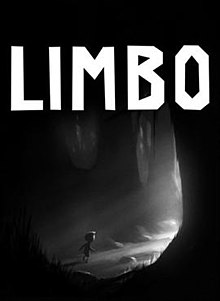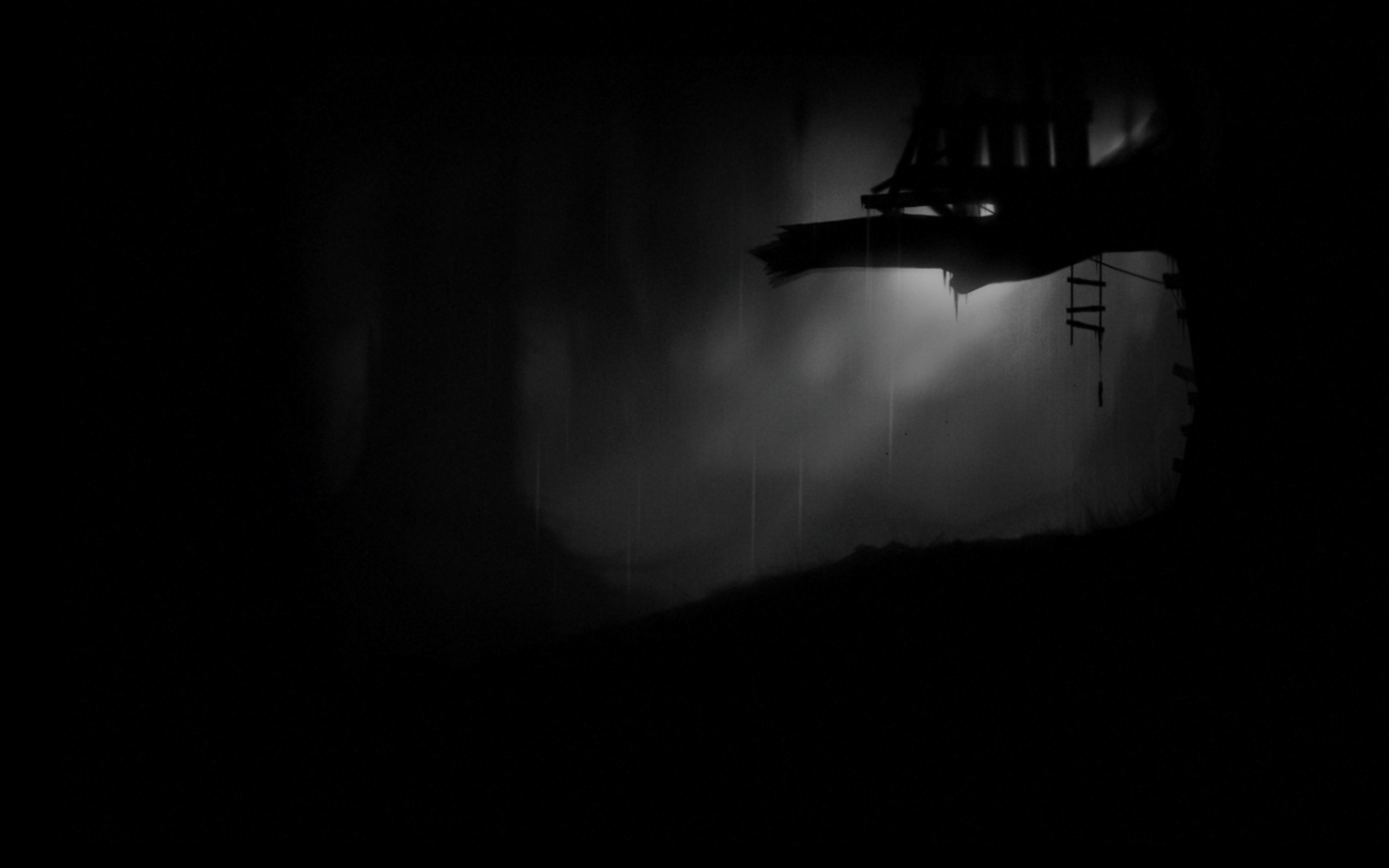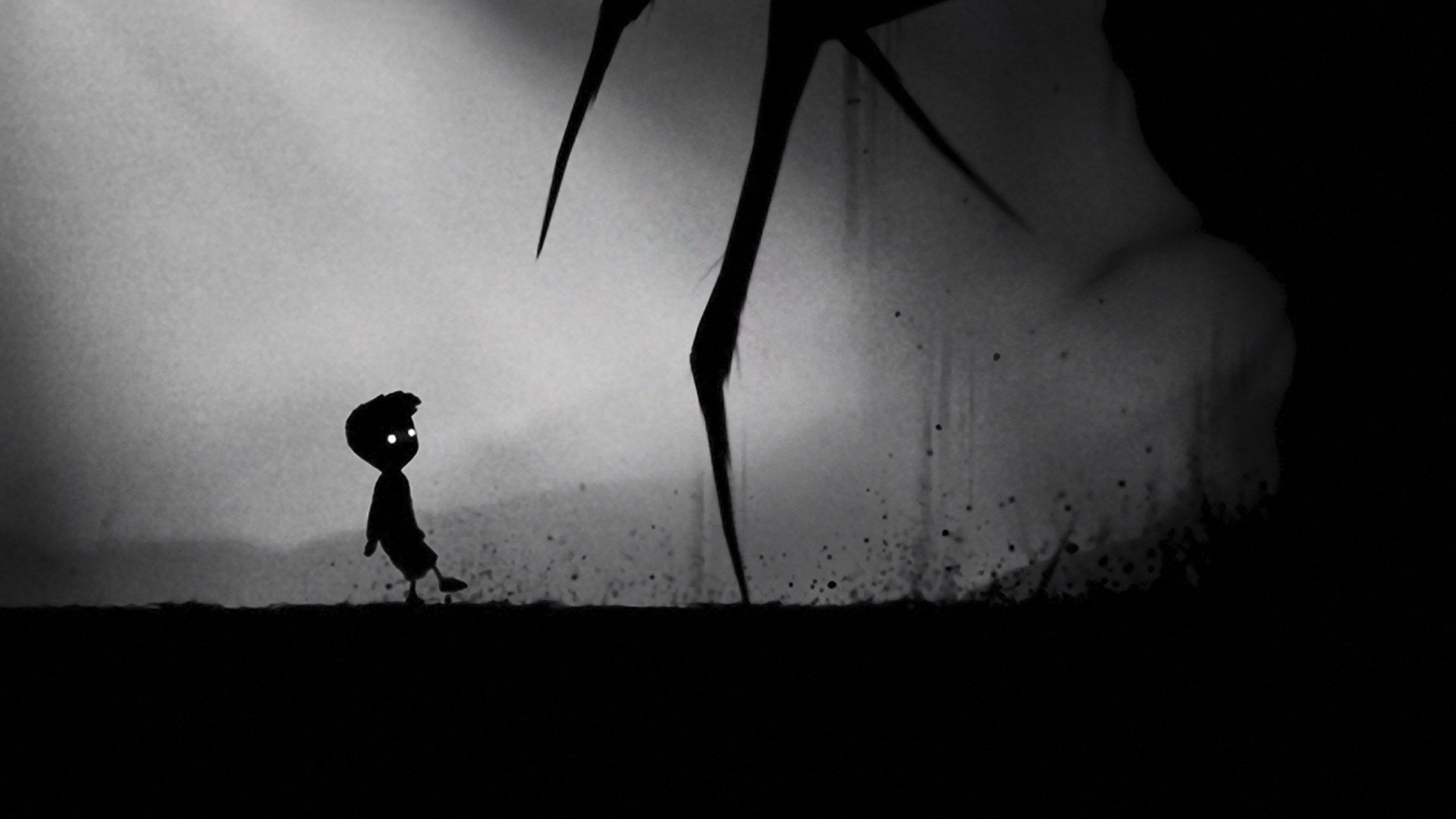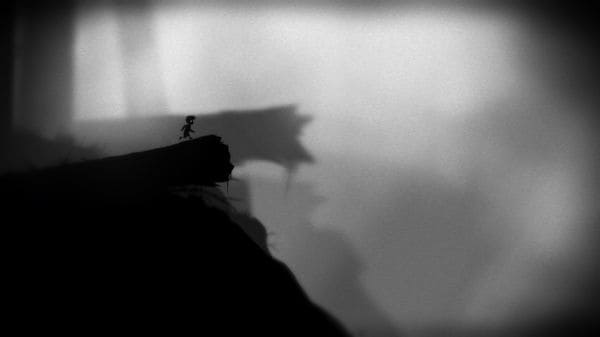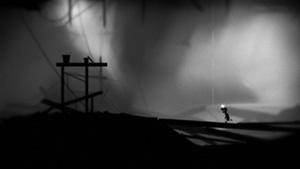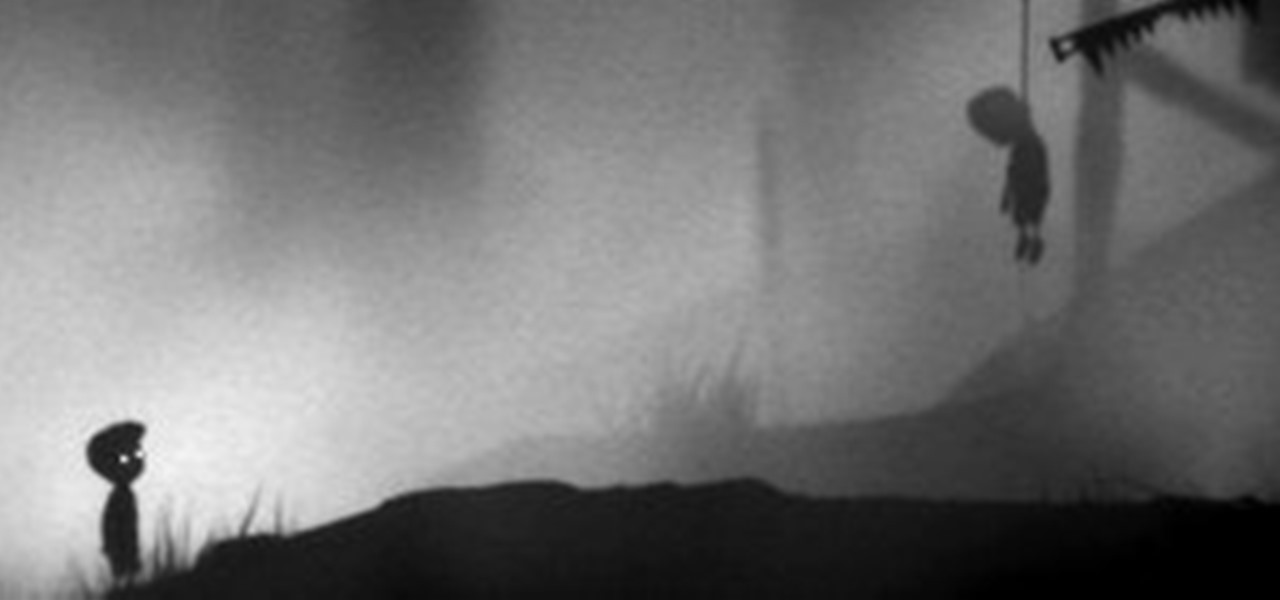I find myself again
thinking about the video game Limbo created by studio Playdead. The game
involves your character, a young boy, wakening in a dark wood alone and then
journeying through a dark world in order to find his sister. Along the
way the little boy encounters all sorts of hostile traps, a William
Golding-esque tribe of little boys out to kill him (with a worm-infected Piggy
drowning in front of him), and a giant Ungoliant-like spider dogging his
steps. Eventually he avoids the traps, tribes and spider and comes to the
end of his journey, naked and alone, to meet a female figure (presumably his
sister) playing in the dirt beneath a treehouse.
An excellent analysis of
the game is posted by Jake Vander Ende at Aletheia's Herald in which the author
recognizes the game as a trope of Dante Alighieri's great work "The
Inferno". Vander Ende notes rightly the strong correlation of the
opening of the game with Dante's opening cantos awakening in a dark wood.
Further, the somber and violent nature of the game strengthen the connection
between the two works. Also he notes the river crossings and marshes as
similar in setting to the river crossing of Acheron and the marsh areas of
upper Hell. Vander Ende also seems correct in noting the transition
midway through the game to a violent mechanized cityscape as similar to the
transition into lower Hell through the gates of Dis.
I very much agree with
these connections. The game seems very intentionally troping all these
powerful images from Dante. I don't entirely agree, though with Vander
Ende's comparison of the spider to the beast, Cerberus - despite the
"feeding of earth" to both creatures. Cerberus is a monster of threes
(three heads) while the spider is a monster of eights (eight leg).
Moreover, Cerberus is a dog; a very different iconic image than the arachnid
image in Limbo. Also, Cerberus is the first but not the only giant monster encountered in the work; Geryon and Satan himself come to mind. Finally, though matter is thrown into the maw of
Cerberus, the spider is crushed by the rock. These seem too distinct to
reach a good comparison.
The article at Aletheia's
Herald also compares the butterfly to Virgil. Though they have similar
characteristics (the guiding nature of each, the connection to the female
figures of Beatrice and the sister, and the "living" characteristics
of both the Latin poet and the bug) I don't think they can be made an
identity. Further, Virgil in Dante's poem is in Limbo and is called out
by Beatrice to reach Dante. Nevertheless, Virgil remains a permanent
resident in Limbo and vanishes at some point during the second of the three
Cantiche. This, I think, excludes the butterfly, a non-human figure
symbolizing immortality, from fully embodying the Virgil image. Moreover,
the butterfly is traditionally seen as the image of the soul emerged from its
sleep (in the chrysalis) - transformation from being trapped in darkness to
resurrection into life. Therefore it may be a reminder but isn't
necessarily a guide.
Finally, Vander Ende
writes that during Act III of the game
"You no longer have angry people defending their territory or whatever, but instead you have pure mechanisms of wanton violence designed to obliterate everything animate and inanimate in their path"
Also, the game's traps
become brobdignagian in size suggesting the titanic forces of Dante's giants
near the last rings of hell and the giant figure of Satan himself. Vander
Ende writes
"the 9th circle is ringed by giants, just as the end of the game is marked with huge gears that dwarf the main character and are never completely visible on screen because of their size. The gears are essentially automaton giants guarding the final areas of the game..."
Though I think Vander
Ende is spot on in seeing the parallels between the two works, and undoubtedly
much of Dante is filtered through the designers into the game, I think the key
is in the fact that the images are “filtered”.
This process seems to be how great art is made. Bad art is like a photocopy – it tries to
make a direct parallel between itself and some other great work; like putting a
piece of literature onto the screen and slavishly repeating every line from the
book verbatim. As Tolkien himself noted
this sort of thing is not possible. A
depiction, like a translation, is a form of interpretation. The images inevitably contribute something
new to the meaning, alter the iconography, tell their own story and if the
artist refuses to acknowledge this their art inevitably becomes inferior. If, however, an artist uses the imagery of a
great work to tell their own story they are exercising what Bernard Batto
speaks of in his work “Slaying the Dragon” as mythopoeic speculation. Here the little boy slays his own Dragon of sorts, but he does not do so in an identical way to Dante's method of journeying through words back to the light - in fact the game is conscientiously without dialogue.
Consequently, though the
developers of the game seem to use many elements from Dante and in fact might
base a majority of their story structure and imagery on Inferno, the game seems
to be telling a slightly different story.
So what story is it the
game is telling?
Some clues to consider:
The black and white nature of the game seems to indicate a clash of opposites;
duality; matter and spirit, male and female, like the yin and yang of the tao. The rain and constant water imagery seem to
hint at feminine forces in the unconscious dreamworld of sleep or death. The violent images do seem to increase during
the course of the story moving from childish fears of spiders, heights, and traps
to malicious fellow humans and finally the impersonal violence enacted on us by
in impartial world. There does seem to
be a movement from natural to more mechanical threats as well.
The butterfly has a
connection to the soul and the soul’s flight toward perfection.
The youth of the boy and
his sister seem to indicate the soul as well since the image of the young
maiden/youth, “kore” in Greek, traditionally represents the soul.
The brain worms seem to
suggest a perpetuity of the puerile and zombielike activity of youth – the worm
being the first of three forms of metamorphosis of the butterfly.
Perhaps, then, one solution
to the game is tied into the term “Limbo” itself. Though the game seems to parallel Dante, it
is not a Hell but a perpetual grey day – trapped doing the same thing again and
again and returning to the spot you thought you left. The journey for the boy, then, seems to be to
escape Limbo lest it be Hell. He, like
Dante, goes through an interior journey personal to himself into which the
nuisances, threats, and fears of the exterior world manifest as lethal dreamlike
images. Broken from his beloved self,
the rational, masculine, conscious side (indicated by the glowing eyes) journeys
through this world of images, striving to survive, and reunite with its feminine,
irrational, contemplative, subconscious side.
Orpheus seeks his Eurydice,
Dante seeks his Beatrice. In each image
the rational is insufficient; deprived of its spiritual feminine element,
deprived of love and desire, it falls into a routine, then into a despair, then
into a spiritual death. Days pass into
days and all life seems meaningless.
This is the story of the Fisher King, who is wounded in its sexuality,
suffering the dolorous stroke, and whose lands fall into parched ruin. This is the rain, image of the feminine, that
falls from the divine realm and heals the land of T.S.Eliot’s “Wasteland”. This is the transformation by means of rain
of the red wheelbarrow of William Carlos Williams.
Our hearts long for wholeness,
for home (the treehouse), call it “god” or call it “Beatrice” – for Dante one
simply led to the next, ever opening into greater repeated forms. “You have made us for yourself, O Lord,” wrote
Augustine, “and our heart is restless until it rests in you.” When we no longer see the glory and beauty of
life, when we are no longer in love with the world around us, things become
dull, lifeless, grey and repetitive.
Shakespeare’s character, Hamlet, experiencing this condition bemoans;
How weary, stale, flat, and unprofitable
Seem to me all the uses of this world!
Fie on't! O fie! 'tis an unweeded garden,
That grows to seed; things rank and gross in nature
Possess it merely.
Seem to me all the uses of this world!
Fie on't! O fie! 'tis an unweeded garden,
That grows to seed; things rank and gross in nature
Possess it merely.
At that point of
existence we see nothing but cold rain, violence from other people, the random
machinations of a hostile world. The
world becomes, as John Paul II said, “a bad night in a bad hotel.” Limbo.
And in such a state, should we “die”, the world would become Hell. Even Dante himself recognized this perilous state. Having suffered defeat at the hands of the Black Guelphs, having been banished from his native Florence and having seen
all his political aspirations fallen into the sewer he might have been close to
despair. The Inferno suggests his
condition on the brink of suicide through linguistic parallels between his
opening cantos and the cantos containing the wood of the suicides.
The trick, then, is to
try to get back home; to be born again and see the world as “charged with the grandeur
of God.” Such a return would unite the
subconscious with the conscious. The
game’s ending suggests a tree house still intact. The recognition of the girl to the boy’s
presence doesn’t seem to be startlement as much as breathless anticipation. The last scene is suffused with light. The boy falls through, not a glass window,
but a skein of water – sideways – as though emerging from the birth canal into
the world. Even the comparison of the
boy waking up in the first woods compared to the last seems to suggest an
ending that reunites the two. The first
woods is lonely and hostile. The second
is peaceful and culminates in the feminine love interest. The boy travels uphill to meet the girl,
symbolizing his journey up toward the light.
Seen from this
perspective I am reminded of St Teresa of Avila’s statement that “In light of
heaven, the worst suffering on earth will be seen to be no more serious than
one night in an inconvenient hotel.” The
boy and the girl together seem to escape this Limbo hotel, barely passing out
of the grinding gears of ever lowering death – just as, in the dance, the bar
is lowered - into life.
(The Limbo) dance is also used as a funeral dance and may be related to the African legba or legua dance."Consistent with certain African beliefs, the dance reflects the whole cycle of life....The dancers move under a pole that is gradually lowered from chest level and they emerge on the other side as their heads clear the pole as in the triumph of life over death".
At the last scene, then,
years in the future, the house is in ruins and what seems to be the graves of
the children or child lie beneath it.
But the scene is suffused with light.
And since it is the last scene in this Limbo world of perpetual sorrow,
the significance seems to be that the children haven’t died but have passed,
finally, from death into real life.
I certainly enjoyed reading Vander Ende's article as it sparked again in me an interest in this game. Now I must go replay it; and play the second of their creations - Inside.
